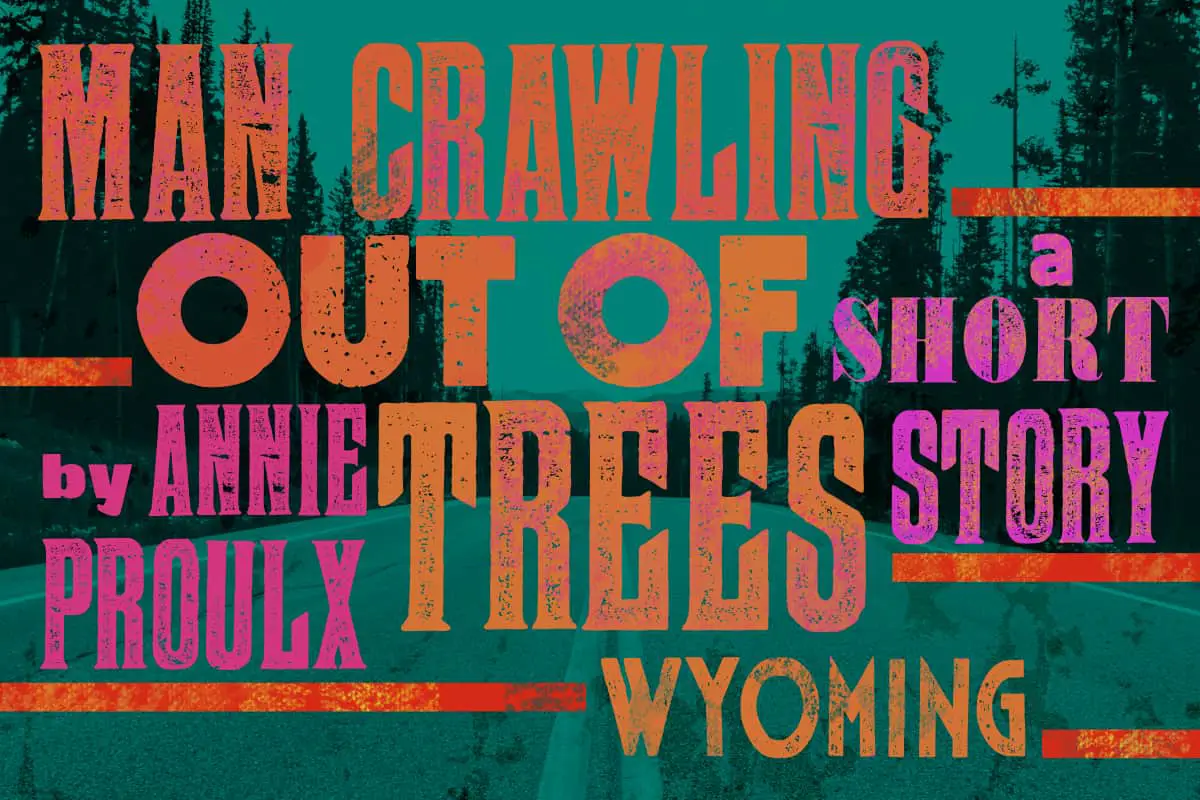“Man Crawling Out Of Trees” is a short story by Annie Proulx, included in her Bad Dirt collection (2004). Many of the stories in this collection are in the tall story, brutal, regional, humorous tradition, and readers who don’t share Proulx’s sense of humour haven’t connected to these stories as well as they connected to earlier ones. But “Man Crawling Out Of Trees” is not one of the light-hearted, comic stories of Bad Dirt. This is one of the ‘substantial’ ones.
The characters in “Man Crawling Out Of Trees” are more reminiscent of a typically Alice Munro short story — Mitchell and Eugenie are a middle class couple who started out in New York City, had a second home all the while in Vermont, in which the wife goes to classes on how to attract birds to the backyard and her own business. Proulx tends to focus on rural characters, with middle- to upper-class newcomers as counterpoint rather than the main focus.
Alex Hunt makes some general observations about Proulx’s work which apply fully to “Man Crawling Out Of Trees”:
Some of the most interesting stories (e.g. “Man Crawling Out of Trees”) plot the work of outsiders, or transplants, trying to go inside, become rooted. Mostly, Proulx peoples her landscape with losers: characters lacking sufficient imagination or will or money or luck to create alternative lives in their chosen place and, thereby, gain complexity, some roundedness. Her conventional narrative point of view, a detached omniscience, keeps us mostly suspended above characters, outside them, as though stationary in the weather and wind, at one with panoramic landscape as characters are not. The effect of long- or medium-range camera shots sustains the inequality of satiric comedy, the engraved lines of caricature. The detached perspective lends itself to panoramic evocations of landscape, a fondness for pan shots, rather than sustained closeups of people or extended forays into interior consciousness. That perspective restlessly hovers above like Wyoming’s eternal wind, scouring and stripping down faces, personalities, trucks, trailers, barns. Often we know the varied faces of topography, the fickle forces of weather, better than characters who remain—with such notable exceptions as “Brokeback Mountain’s” Ennis Del Mar and Jack Twist—at arm’s length.
The Geographical Imagination of Annie Proulx: Rethinking Regionalism edited by Alex Hunt
The Geographical Imagination of Annie Proulx: Rethinking Regionalism edited by Alex Hunt
Notice how useful film terms are in describing written work. Notice also that Proulx tends to put the reader in ‘audience superior’ position, by helping us side with ‘the landscape’ rather than with ‘the people’. The people are fools, we conclude, by thinking they can live there and tame it.
Annie Proulx’s untamable Wyoming sometimes reads as a Gothic backdrop–one might say a nineteenth-century wilderness, à la Wuthering Heights, with desert and sagebrush instead of moors and heath–creating an ominous and threatening environment. Take for instance in “Man Crawling out of Trees” the description in the iterative of the meteorological forces throughout the month of December as experienced by Eugenie, an outsider who has recently moved with her husband, Mitchell, from New England to Wyoming
Bénédicte Meillon
STORYWORLD OF “MAN CRAWLING OUT OF TREES”
Writing specifically of this story, Hunt says:
Many of the Wyoming Stories monumentalize landscape, presenting variations upon the them of the “ur-landscape before human beginnings” cited in “Man Crawling Out of Trees.” Proulx gives voice to this gigantic terrain, which sings the morning song of creation.
The Geographical Imagination of Annie Proulx: Rethinking Regionalism edited by Alex Hunt
The Geographical Imagination of Annie Proulx: Rethinking Regionalism edited by Alex Hunt
When reading Proulx’s work, my usual way of separating setting from character simply doesn’t work. Instead we must treat them as a single entity, to a point.
HOW CHARACTER AND LANDSCAPE ARE INTERTWINED
Mitchell Fair, of “Man Crawling Out of Trees”, represents one of those affluent recent arrivals despised by Wolfscale, whose big pine log home, part of the Star Lily Ranch “estates”, is satirized, though not as forcefully as his wife, Eugenie, a stubborn misfit. This story unapologetically renders landscape monumental. While Mitchell struggles to settle in, Eugenie quits husband and place, fleeing east, and the story closes with the omniscient view literalized in the jet whisking her back to New York. The panorama of Wyoming, in which “it seemed human geometry had barely scratched the land,” matches Mitchell’s earlier infatuation: “Was this what Mitchell saw when he went on those long drives, the diminution of self, a physical reduction to a single gnat isolated from the greater swarm of gnats? The absurdity of living one’s life?” The reference to “human geometry” observable from six vertical miles up ironically recalls the Jeffersonian grid system marching west across the nineteenth and early twentieth centuries and meeting, beyond the hundredth meridian, the “ur-geography” of a Wyoming where imposed section lines appear increasingly untenable, out of place. […] Proulx hyperbolically shrinks and marginalizes humanity to the status of ticks or gnats to suggest that if anything is going to “subdue [the earth; and have dominion over …every living thing that moveth upon the earth” (Genesis 1: 28), it will be that “endlessly repeated flood of morning light” and wind, not ourselves. In the marriage of self and landscape, as native peoples have always known, the latter sculpts the former, not vice versa. Yet a “diminution of self” does not automatically eventuate in or require caricature—the failed rancher personified in Gilbert Wolfscale. Proulx’s detachment and shrinkage also keeps her landscape big. As every mountaineer knows, feeling small is a lesson in humility and source of strength
The Geographical Imagination of Annie Proulx: Rethinking Regionalism edited by Alex Hunt
The Geographical Imagination of Annie Proulx: Rethinking Regionalism edited by Alex Hunt
I’m no mountaineer, but I do live in Australia. I recently visited the Australian outback for the first time. (A significant proportion of Australians never go out there.) I experienced this feeling of being absolutely tiny which I’d never felt before. It was quite something, and the entire reason for going, really, since there’s very little out in the middle. I felt it most driving in to Coober Pedy. A Google Earth trip won’t give you that same feeling of being there, but the huge piles of earth visible from the Sturt Highway left me with the unmistakable feeling of being an insect. I felt I was an ant, surrounded by ant hills. This feeling of vulnerability is no doubt magnified in summer, when the temperature soars to beyond the mid 40s (C), and where there’s no water for hundreds of kilometres in any direction.
The vast landscape as described by Annie Proulx in “Man Crawling Out Of Trees” in particular is the literary version of what has been called ‘the miniature in storytelling‘. By playing around with differential size, a storyteller can say a lot, symbolically, metaphorically, about the human condition—making us smaller emphasises our vulnerability, of course. Huge landscapes also remind us that human civilisation is impermanent, and that our relationship with the land is one of adversity.
Apparently when writing, Proulx likes to start with the ‘bedrock’ of a place and layer the characters over top. She throws a sleeping bag into her truck then goes visiting. She absorbs the people who live in the places which fascinate her. She reads all sorts of non-fiction work — about the plants, the geology. Proulx had a long history of writing non-fiction before she branched into fiction, and she approaches fiction more like a scholar approaches non-fiction.
Charles Dickens and the American Sherwood Anderson have been cited as influences on Proulx’s work — Dickens because of his characterisations (tending towards hyperbole and satire), and Anderson because of his ability to make a novel out of something short-story length. Also because he’s American and wrote about similar sorts of things.
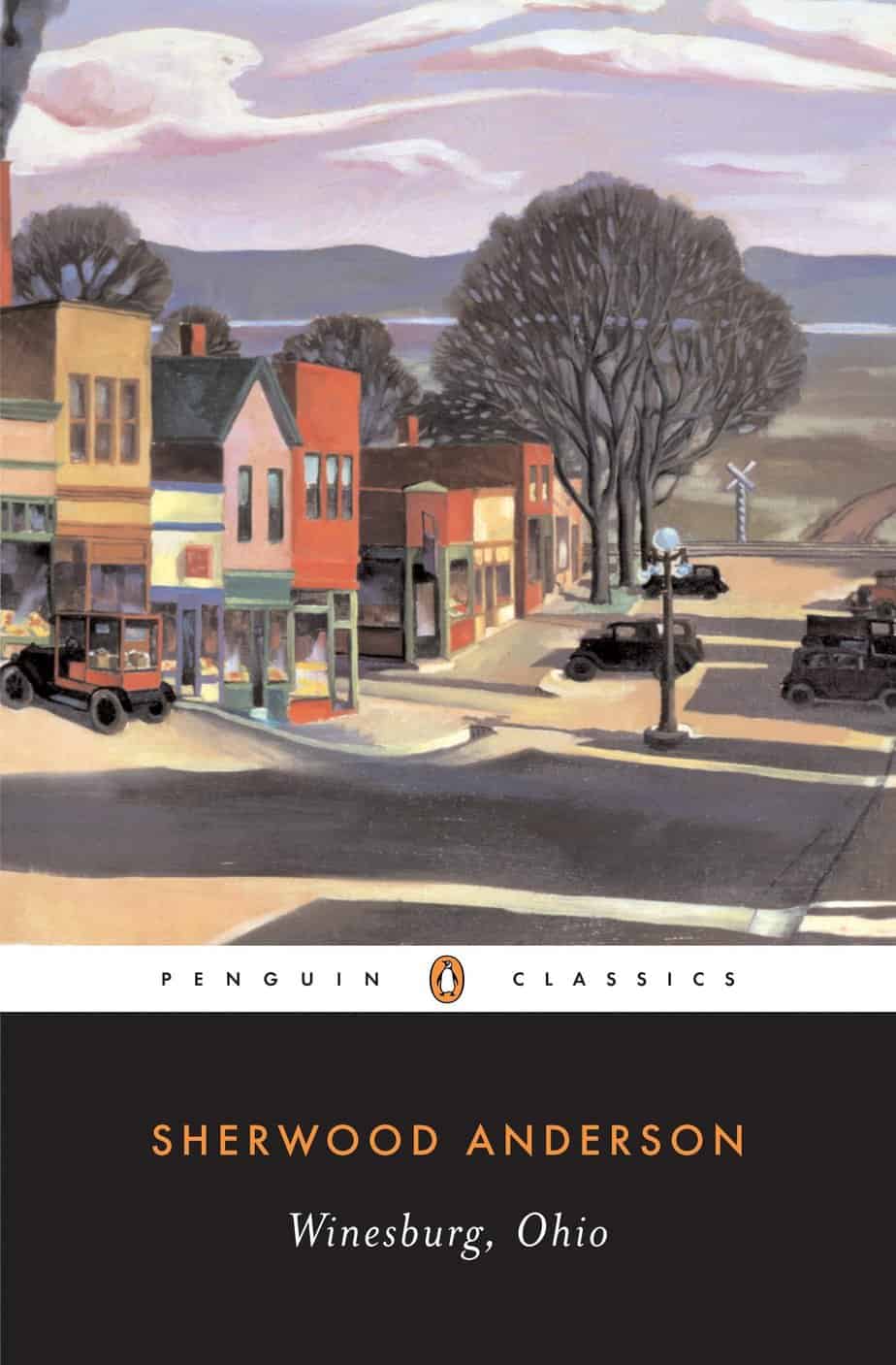
WHAT HAPPENS IN “MAN CRAWLING OUT OF TREES”
“Man Crawling Out Of Trees” opens with married middle aged couple Mitchell and Eugenie Fair driving from Maine to their relatively new home of Wyoming after visiting their daughter, her boyfriend Chaz and their new grandchild. The daughter, Honor, still lives in New England. Mitchell and Eugenie used to live there but moved several years earlier. Mitchell hadn’t been back since.
Now that Mitchell has acclimatised to Wyoming, New England — and the ‘fake’ Adirondack lodge his daughter lives in — fails to impress. He’s glad to get out of the place, which feels ‘shadowy’.
The Adirondacks themselves could be a suitable place for a different kind of Proulx short story, because many of her stories are about exactly this:
Until the late 1800’s, most of the Adirondacks were a rugged wilderness that few dared to venture into. As transportation routes slowly became established later in the 19th century, wealthy city dwellers started taking extended vacations there to recreate and escape from unhealthy urban environments.
Adirondack Style Architecture
Adirondack Style Architecture
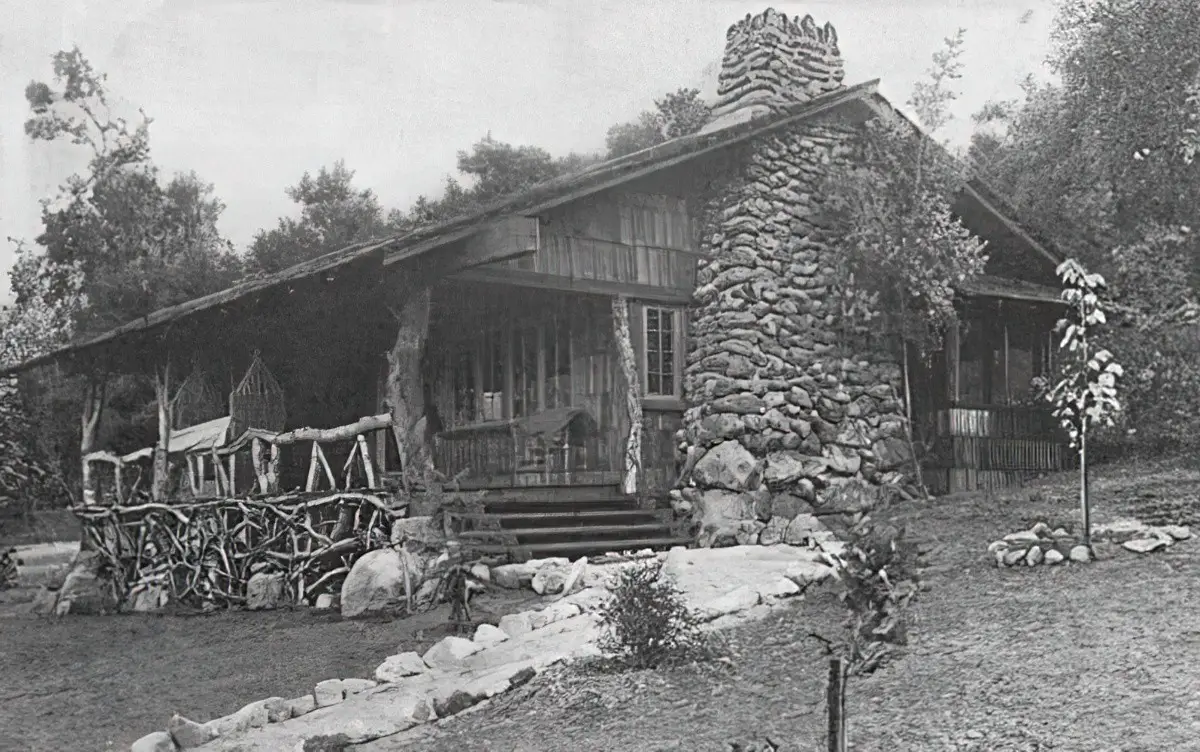
Nowadays, of course, houses don’t need to be built with exposed beam ceilings — dropped ceilings tend to give a building a better energy efficient rating. Buildings built like an Adirondack lodge have been built for their style, and this fakeness seems duplicitous and ridiculous to Mitchell. This ironic headline says it all: Rough it like a Gilded Age Millionaire in the Adirondacks.
REAL VS FAKE
Mitchell fancies himself a man who appreciates ‘real’ and ‘practical’ over ‘stylised’ and ‘artificial’. He does not approve of people using these lake houses as holiday homes, nor of the ‘toys’ they leave in their yards (small boats and jet skis?), nor of the pretentious hipster name of his grandson — Halyard (shortened to Hal). He despises the retired policemen whose new work as security for the homes of rich people seems to Mitchell like a huge comedown — unimportant busywork.
In stories where there is fakeness, it often happens that the ‘mask‘ comes off eventually. Rarely, secrets are kept secret and characters learn to live with secrecy.
GHOST
There has been an argument at the lodge — Mitchell does not approve of Honor’s boyfriend, partly because he’s as old as Mitchell himself, and wears a pretentious ponytail to compensate for baldness, Mitchell believes) , and also because he won’t be straight with Mitchell about how he earns his money. This signals a difference in culture — working class people like Mitchell tend to be more upfront about their incomes than middle class people, who consider it poor taste to focus on such things, instead preferring to make smalltalk about wine and restaurants (as Eugenie is happy to do). Mitchell therefore feels that the boyfriend is being deliberately dishonest with him. Stuck in the middle, Honor tells Mitchell that she won’t give details about her boyfriend’s income until he reveals who her real father is, which hints to the reader a long and involved backstory of which we will never learn in this particular story, but which nevertheless forms a ghost which affects the present. In this way I’m reminded of Proulx’s short story “Bedrock“, in which I was left longing for more information about the main character’s mostly estranged daughter. (I’m also reminded of “Bedrock” for the inclusion of a couple in which the husband is much older than the wife.) It is revealed that Eugenie learned only three years earlier that the man she thought her father is not her birth father, which coincides with Mitchell and Eugenie moving away completely, and probably also with Eugenie hooking up with a man her father’s age. The reader connects these events; they are not overtly connected by Proulx herself, rather listed — it’s up to us whether we connect them or not, but humans are inclined to make connections whether we want to or not. (Writers can exploit this tendency.) The unfatherly kiss Honor gives Mitchell as he leaves is confusing not only for Mitchell, but also for the reader. It seems Eugenie thinks of her father differently now — compounded by the fact that her boyfriend is of the same demographic. Mitchell is disgusted by this. Nothing more is done with this brief moment of hinted-at incest. That’s Annie Proulx’s technique. You never know as reader which details are foreshadowing details and which are simply resonant details which lead to a fuller picture of a circumstance.
NATURALISM
This is because Proulx deliberately avoids writing the ‘psychological novel’. Unlike Sherwood Anderson, she doesn’t go into why characters are the way they are.
I do not attempt the interior novel…I always place my characters against the idea of mass, whether landscape or a crushing social situation or powerful circumstances.’
In this, she has more in common with Thomas Hardy and John Steinbeck. These writers are known as ‘naturalist’ writers. The setting has a huge impact on her character.
THE CAR TRIP
Eventually, Mitchell and Eugenie reach Wyoming. Mention of the CD player gives further insight into the era. (Post cassette tape, pre-ubiquity of mobile phones.)
Eugenie likes listening to modern country rock whereas Mitchell prefers classical.
Eugenie is therefore revealed to be someone more in tune to the fashions, whereas classical music is older and therefore more ‘timeless’, and listened to by people who eschew music fashions.
Proulx uses the car ride to highlight a growing distance between husband and wife, symbolised at first by the music, but also, more deeply, shown by Eugenie’s new restraint when previously she was inclined to agree with everything her husband said in an act of wifely deference.
They’re driving an Infiniti, a Nissan first released in the late 1980s as a luxury model. The Infiniti is known as ‘an entry level luxury model’, so I imagine they’re owned by people who like cars but who can’t necessarily afford the very best. This much is not said — Proulx gives us only the model of the car, knowing full well the sort of person who drives it — but Mitchell’s attitude towards cars is shown in his attitude to the car program on the radio. He’s got no time for it (because it’s only 10% about cars). This puts me on Mitchell’s side, if I’m honest, though I’m also with Eugenie, who newly sees through the bullshit that a wife is required to agree with her husband else be accused of starting an argument.

THE BURNING TRUCK
Road trip stories are a good way to put family members in close, extended contact with each other — a ripe arena for real life and fictional conflict. Eventually, in a road trip story, something will happen on the outside, and the occupants of the vehicle will band together to overcome their mutual opponent, or else break apart.
Mitchell disapproves of trucks and the way truck drivers road — a sentiment I share living in Australia — and he takes schadenfreude delight when one of them catches fire. Is this a foreshadowing detail? Symbolism? Or is it simply an insight into Mitchell’s slightly vindictive nature?
(Proulx has geolocated this event for us — Elk Mountain is a real place.)
Mitchell and Eugenie drive closer to home, and Annie Proulx emphasises the trees. Eugenie has a special relationship with those. The description of the old woman (Eleanora Figg) who has now moved out of her ‘scabrous trailer’ into a log hut stands in direct opposition to the Adirondack lodge which Honor lives in — this log hut is authentically simple. (There’s a campground nearby called Scab Creek Campground.)
All the way through, Proulx turns the landscape into a person and the people into the landscape. The old woman ‘seemed made from sagebrush and rock herself’. (See also: How can the setting be a character?)
BACKSTORY OF MITCHELL AND EUGENIE
Once they return home from their slightly mythic journey, Proulx launches into the history of this couple. She’s already made us wonder — how is it that their daughter was fathered by another man and only recently learned of it? Did Mitchell himself know of it?
As a young woman, Eugenie had the face of ‘Pallas Athena‘, according to Mitchell, though now he sees her as old.

This is how Mitchell sees his wife now:
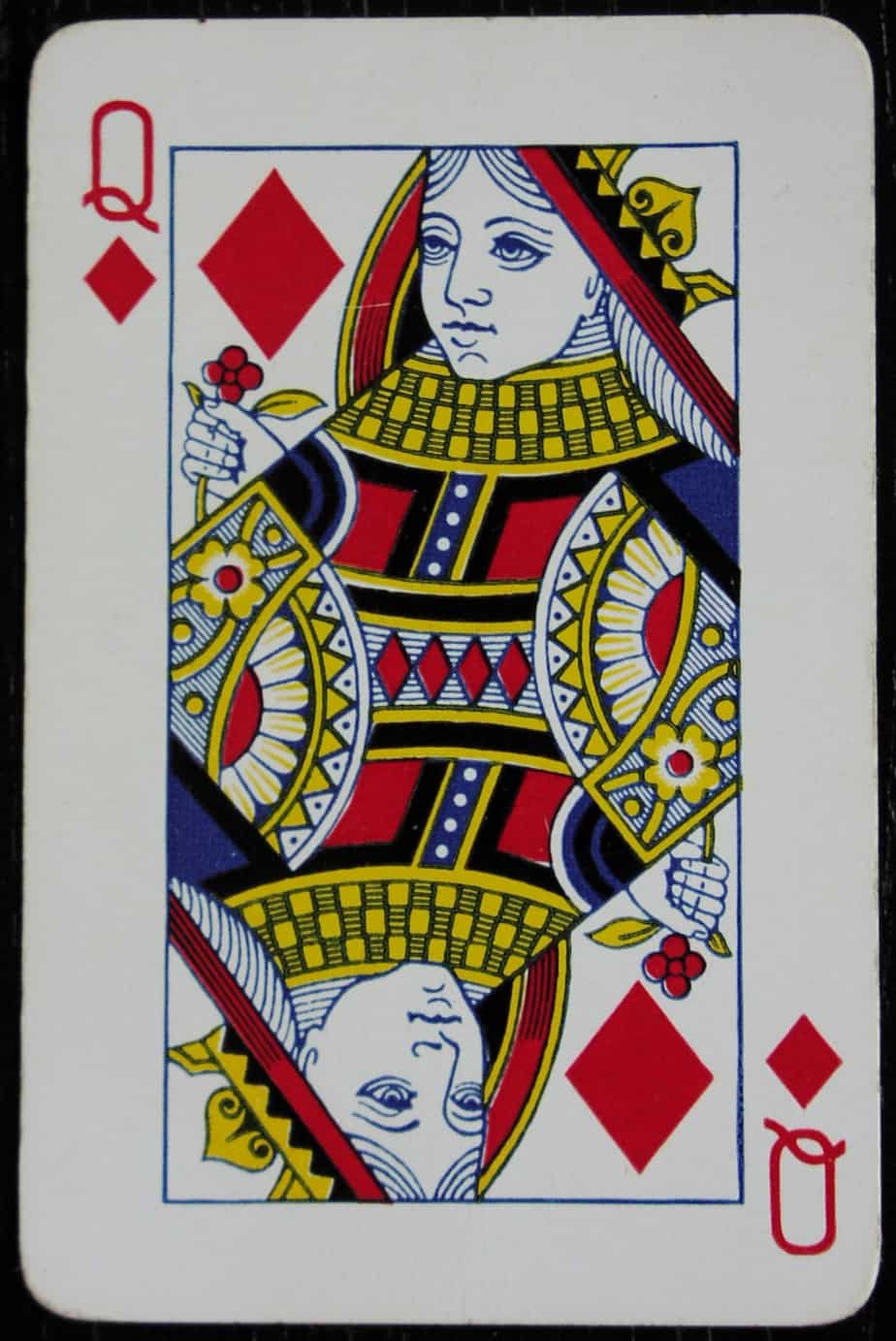
I note with interest that he disapproves of the way his wife has aged (quite normally, and as he has), while at the same time disapproving of his daughter’s boyfriend, who is obviously attracted to a much younger wife. What is it, exactly, that Mitchell does not like about Chaz? Is part of it envy?
Then we get Eugenie’s vision of Mitchell, to balance things out. Mitchell reminds her of ‘a preserved corpse pulled from a Scandinavian bog’, which is a wonderfully evocative comparison in the Proulx tradition — comically so.
I believe Eugenie (Proulx) is referring to The Tollund Man. When he was pulled from a marsh in Denmark, police thought they were dealing with a recent murder victim, he was so well preserved.
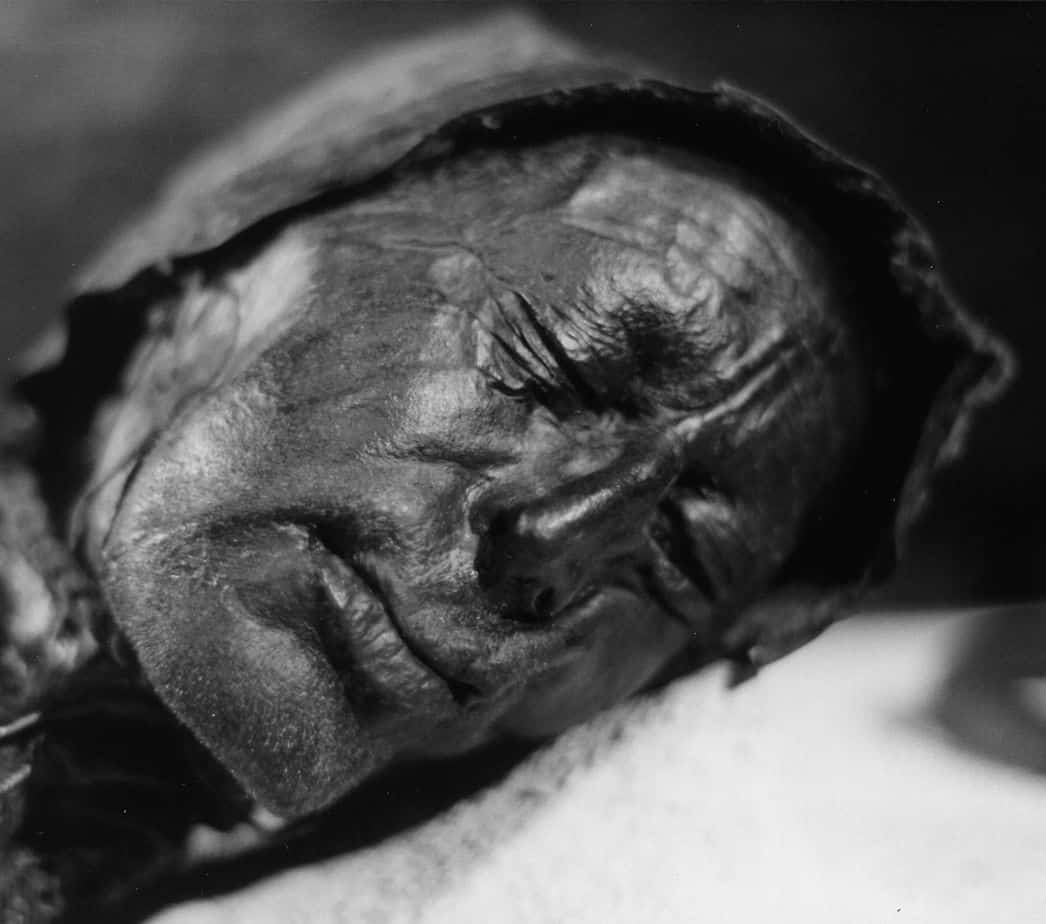
By comparing her husband to a corpse, this gives us some psychological insight into how Eugenie views their marriage. And because Proulx is not a ‘psychological writer’, this is how Proulx gets us into the characters’ heads. Via their comical observations, mostly. Through metaphors.
Proulx uses a Biblical metaphor in describing ‘the years before the snake entered the garden’.
Next comes infidelity — these are characters living with uncontrollable lust and vengeance. We learn the identity of Honor’s birth father. In these dishonorable circumstances the baby is ironically named Honor, and the story-reason given is because Eugenie ‘had been moved by Honore de Balzac’s Le Pere Goriot in her French class.
The novel takes place during the Bourbon Restoration, which brought profound changes to French society; the struggle by individuals to secure a higher social status is a major theme in the book.
Wikipedia
Is this an allusion? Do the themes in this short story echo those in Balzac’s novel?
COMIC FLOURISH
Mitchell believed their daughter had been conceived in their five-legged bed, the supernumerary leg a wizened center-positioned stick with a metal glide foot. It was meant to give extra support but failed and beat counterpoint against the floor when they made love.
“Man Crawling Out Of Trees”, Annie Proulx
“Man Crawling Out Of Trees”, Annie Proulx
The word ‘supernumerary’ itself has a comic quality to it: It means ‘present in excess of the normal or requisite number’ but when it functions as the inverse as intended, there’s an irony there which lends humor. It is also symbolic, of course — there are extra people who have inserted themselves in the marriage.
Mitchell and Eugenie eventually decide to sleep in separate rooms, and this symbolises a breakdown in the marriage.
Then we get the backstory of how the secret of Honor’s father was revealed — she tried to donate a kidney to Mitchell. Proulx offers this information with a detail which is obviously resonant for the characters involved: the red leather sofa.
Eugenie and Honor sat together on a red leather sofa when Dr. Playfire said Honor could not be a kidney donor for Mitchell because neither her DNA nor her blood type matched.
“Man Crawling Out Of Trees”, Annie Proulx
“Man Crawling Out Of Trees”, Annie Proulx
We have our suspicions confirmed that the reason this couple ‘got out of the city’ was to escape the turmoil brought about by this revelation. This was compounded by Mitchell’s ill health.
Mitchell decided to move them to Wyoming partly to avoid paying taxes, revealing right-wing politics. Proulx hints at possible tax evasion. He likes the low population density.
When Mitchell revisits Wyoming for the first time in decades, he is struck by the beauty of the place. Proulx describes it as a heavenly landscape.
Now Mitchell’s own distaste for ‘pretence’ is cracked wide open for the reader, as we learn the first thing he did when moving to Wyoming was buy new clothes and a new wagon in order to disguise himself as a local:
Before they looked for a house they outfitted themselves at a Western Wear store, Eugenie buying two fringed suede skirts, some high-necked Cattle Kate blouses, and a pair of Rocket-buster boots featuring turquoise skeletons. Mitchell got into jeans, a western-cut shirt with pearl buttons. He bought a butter-colored pair of Olathe boots that slammed like a trip-hammer wherever he walked. He stumbled a lot, unable to get used to high heels, especially as he’d just got his first pair of bifocals. He bought a twenty-year-old pickup with four-wheel drive, dark green and dented, something he had always wanted, had a CD player installed, and took to driving around with his elbow out the window. He marveled at the truck’s lack of rust.
“Man Crawling Out of Trees” by Annie Proulx
“Man Crawling Out of Trees” by Annie Proulx
Notice how Mitchell bought an old truck but installed a CD player, turning it into the vehicle equivalent of Chaz and Honor’s fake Adirondack lodge he so despises.
That description is a comic stereotype of newcomers dressing up, almost in a Halloween way.
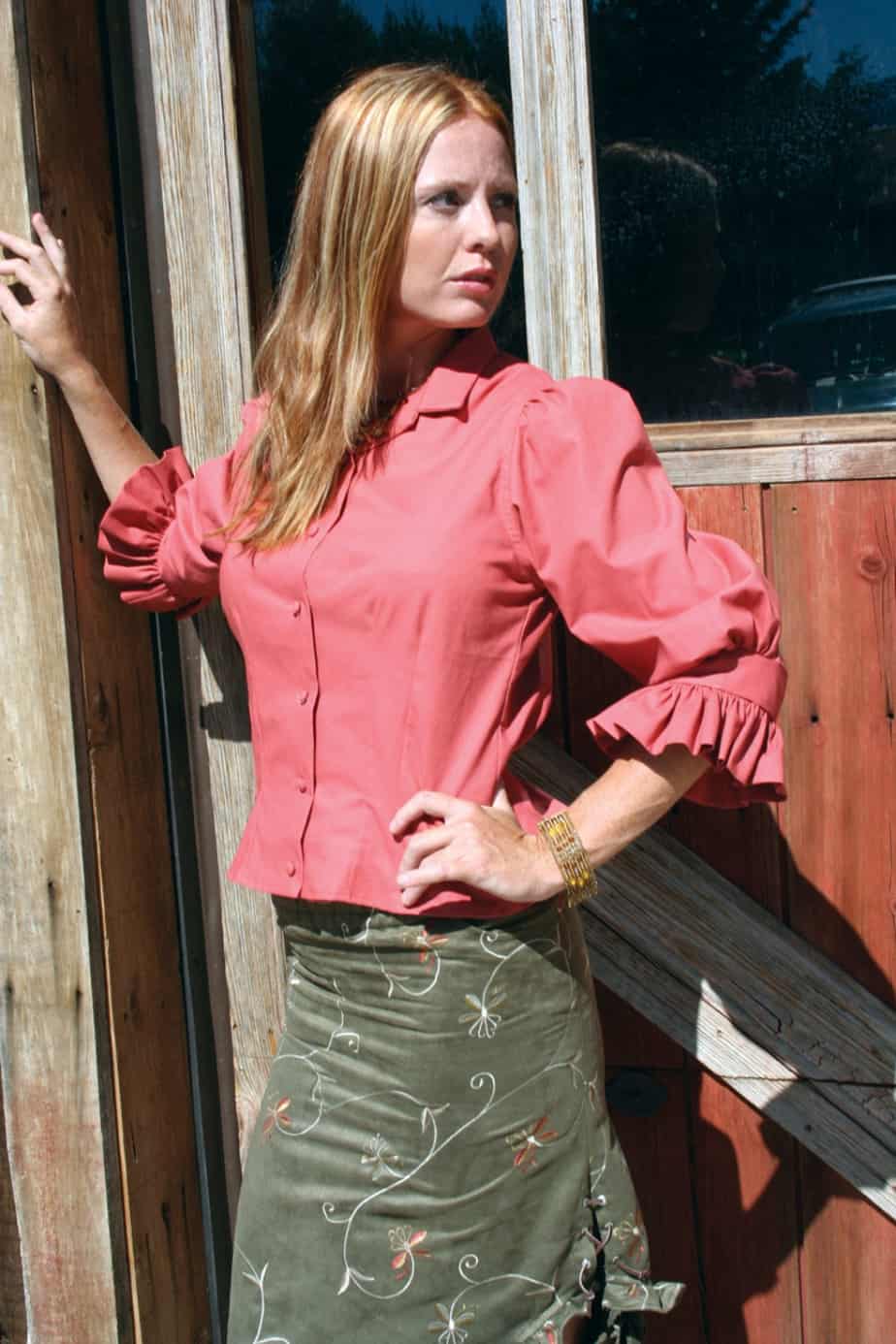
Proulx also mentions that Eugenie and Mitchell are on a diet of ‘meat and salad’ — she doesn’t use the word Paleo Diet, but people from Wyoming sometimes like to point out that they were on the Paleo Diet before the rest of the world ever heard of it. That is the natural local cuisine of the area, with lots of farmers about, killing their own meat, growing their own fresh food.
The Fairs bought a house near Pinedale (a real place) near Swift Fox (which is not, or at least, not on the map). Pinedale today has a population of about 2000 and is mostly a tourist industry — gateway to the mountains.
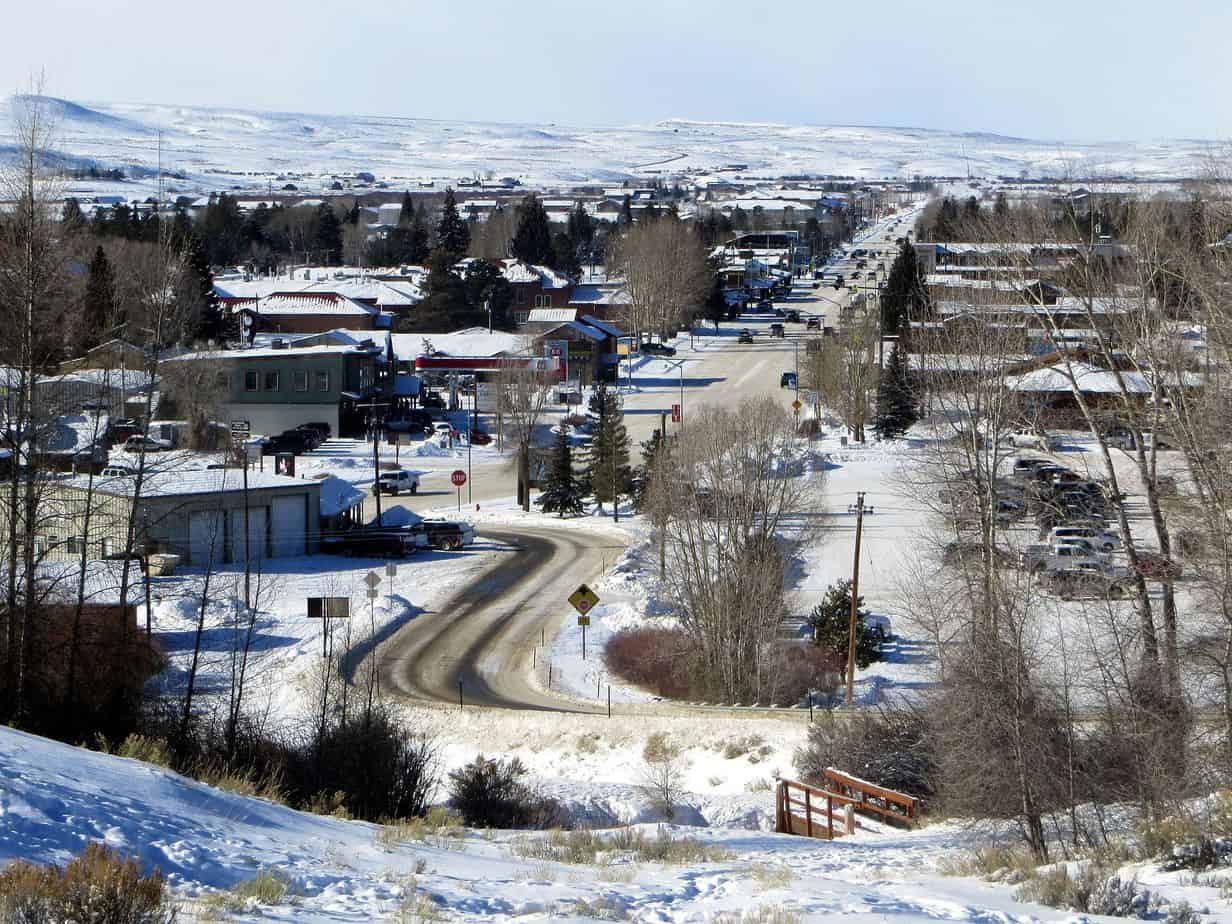
I imagine Swift Fox is the fictional name for a town like Boulder. I’m guessing the house purchased by the Fairs is built in this style.
STORY WITHIN A STORY
The story about Eleanor Figg is an elongated character sketch, and has all the elements of a fully-fleshed narrative. Eleanor’s psychological shortcoming is that she doesn’t approve of anything that allows one to take pleasure in life; her moral shortcoming is that she doesn’t like outsiders and likes to alienate them when she first meets them; she ostensibly desires to be left alone but she really desires to have a heavy hand in local affairs, using her three sons as heavies; her plan is to live on meat, potatoes and black coffee until she dies; her opponents are outsiders; her big big struggle comes, we assume, when her son dies of heatstroke on his first ever holiday, even though she’s always instilled strength in them, and respect for the outdoors. This character sketch works especially well as a short story in its own right because of that ironically tragic ending.
The same can be said for the character sketch of Condor Figg and Mrs Conkle.
THE SYMBOLISM OF SEASONS
Wyoming is a place with very distinct seasons, and so lends itself to stories which cover an entire year. When the Fairs move to Wyoming the weather is ‘fair’ (hence their symbolic name), but as Eugenie loses her rose-tinted view of her rural retreat, and of the unwelcoming, intolerant people who live there, her mood changes. In an example of pathetic fallacy, this is reflected in the onset of winter. Once transplanted, this tenuous couple respond differently to their new environs and the relationship falls apart. Even after infidelity and secrets, it is ultimately the harsh landscape of Wyoming that breaks them.
THE TITLE
My first impression of the title: A story which links back to a primitive past early in human evolution when we first descended from the trees and started to walk upright on land. And I do think the title is about that — it’s part of Proulx’s massive timescale.
More specific to this story, one day when Mitchell is out driving in the snow, Eugenie looks out her Wyoming window in the middle of winter, she sees a man literally crawling through the trees. He looks like a maniac so she calls the police. Turns out he’s a skier who has broken his leg.
Eugenie has brought a city response to a rural area — a man needed help but she suspected him of being a prowler. She realises (deep down, we deduct) that she doesn’t belong here. When Mitchell learns of the incident, he realises they won’t be allowed to stay here, as they have broken a cardinal rule. You help strangers in need even when they are moral enemies.
STORY STRUCTURE OF MAN CRAWLING OUT OF TREES
SHORTCOMING
Mitchell and Eugenie have problems in their relationship, mostly deriving from poor communication but also from different basic tastes and desires. When they move from New York City to a small rural town in Wyoming, the challenges they face open up existing cracks.
DESIRE
Mitchell wants solitude, and to interact with the rugged landscape in a superficial way, matching his favourite classical music to certain vistas and so on.
Eugenie thought she wanted that, but actually she misses New York and her old job as a kitchen designer, and her daughter who has stayed back East.
OPPONENT
Mitchell and Eugenie are each others’ opponents.
The big, monstrous opposition is the landscape, and Proulx describes it at times as if it is an actual monster, especially in winter.
The local personalities who don’t welcome them are simply personifications of the landscape.
PLAN
After a particularly trying revelation regarding the father of their daughter, Mitchell and Eugenie move to a completely new place. They hope this will rejuvenate them. They can pretend they are completely different people — people off the land, rather than bohemian city types.
BIG STRUGGLE
The big struggle is two part:
- The man who Eugenie fails to help, and the dressing down she gets from local women
- The big argument between Eugenie and Mitchell, which leads to their break-up
ANAGNORISIS
They both realise they’ll never fit in here and that Eugenie has made a big mistake.
NEW SITUATION
Eugenie leaves; Mitchell stays.
Eugenie takes inspiration from the landscape to incorporate into her kitchen designs back East — cowboy kitchens for urban bachelors and ranch kitchens with crossed branding irons over the raised hearths. When applied to race, this is known as cultural appropriation, though here we have a city/rural divide which is separate from race.
